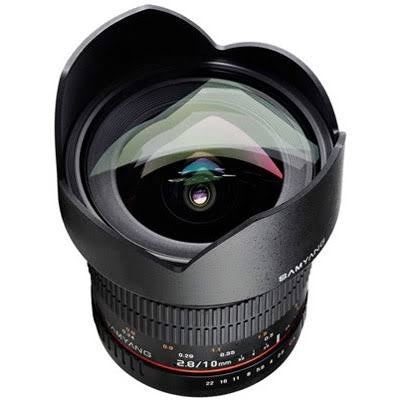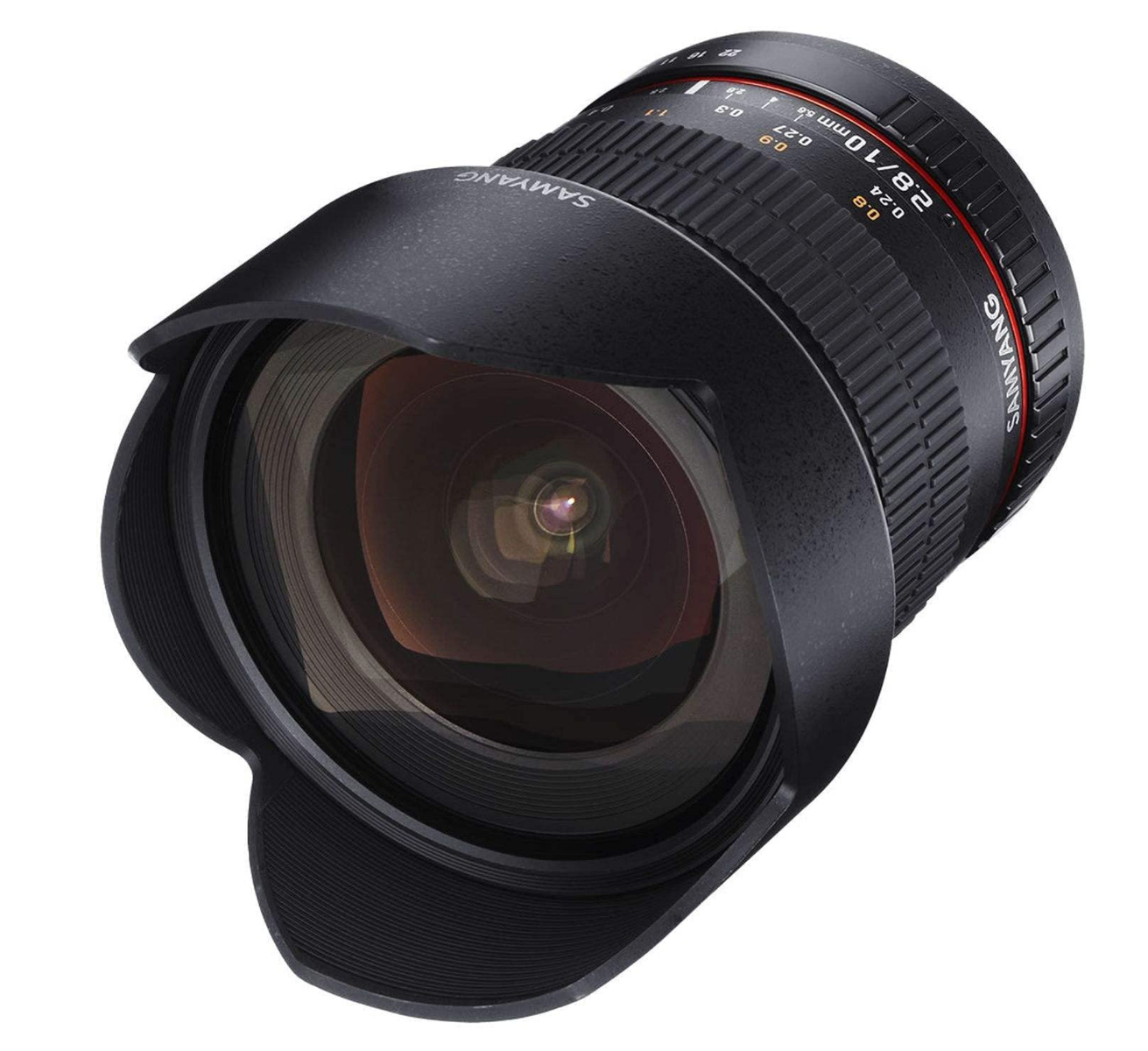Product Description
Samyang 10mm F2.8 ED AS NCS CS Lens Canon EF-M Mount Fitting
The Samyang 10mm f2.8 ED AS NCS CS Lens Canon M is ideally suited for indoor, architecture and landscape shooting. Simply because of an incredibly wide angle of view up to 109.5 degrees and rectilinear image mapping function. This Samyang 10mm f2.8 ED AS NCS CS Lens Canon M ultra wide-angle manual focus lens is manufactured for CS / cropped sensors APS-C cameras. The Samyang 10mm lens in relation to its capabilities is able to adequately contend with the most efficient wide-angle designs that you can buy today.

Samyang has brought in a focused development program to discover the maximum optical parameters and decrease the product's body shape and weight together at the same time, this lens ended up being the most recent version of the Samyang 10mm lens including factors and capabilities comparable to the optimum wide-angle prime and zoom lenses that are available on the market today.
Ideal for indoor, architecture and landscape shooting.
Features 2 aspherical AS lenses and one lens constructed from extra-low dispersion glass.
An incredibly useful tool for sports photography and photojournalism applications.
The Samyang 10mm f2.8 ED AS NCS CS Lens Canon M is the first
Samyang optics lens using the nano crystal anti-reflection coating system
Ultra Wide-angle lenses capture much larger views than regular lenses, helping you to fit substantial subjects inside the frame. They are able to prove invaluable regardless of if you’re looking to photograph a large building, cramped interior, a scenery view, or even just a big group image.

They are likewise recommended when we quite literally can not take a step back any more to fit in the subject, like for example with real estate agencies who wish to make an area seem larger than it happens to be, or in case you can not fit the subject inside the frame of the photograph.
The Samyang 10mm f2.8 ED AS NCS CS Lens Canon M has 14 elements divided into 10 groups, this provides 2 aspherical AS lenses and one lens constructed from extra-low dispersion glass

The Samyang 10mm f2.8 ED AS NCS CS Lens Canon M is an effective tool to photograph interiors and architecture. It gives you a remarkably wide angle of view, ranging 109.5 degrees and linear imaging performance. It contains a wide f/2.8 aperture for shooting in low-light environments. It is because of this it may be effectively used indoors or for sport, architecture, journalism, landscape and low light photography. The optical design of the lens contains 14 elements divided into 10 groups, as well as 2 AS aspherical lenses and one ED glass along with a very low coefficient of dispersion.

This is the first Samyang lens to offer a nano crystal anti-reflection coating system. This technology offers a reduced reflection factor than (U)MC system as the coating now is applied more evenly on the surface area of the lens. Features brought by the nano crystal layer feature better light transmission, greater resistance to reflections and greater contrast, and all of this gives a better optical resolution of the lens.

Ultra-wide lenses are very effective and simple to operate even in manual focus mode, the Samyang 10mm f2.8 ED AS NCS CS Lens Canon M boasts a removable lens hood, and is really lightweight to carry around, so if you find yourself starting to step-back to squeeze-in the desired shot, then purchase this ultra-wide lens.
| Lens Mount | Canon EF |
| Focal Length | 10mm |
| Lens Construction | 14 Elements in 9 Groups |
| Maximum Aperture | f/2.8 |
| Minimum Aperture | f/22 |
| Number of Diaphragm Blades | 9 |
| Format | APS-C |
| Angle of View | 105.9°(diagonal) |
| Max Reproduction Ratio | Not Stated |
| Focus Modes | Manual Focus |
| Closest Focus | 24cm (9.4”) |
| Internal Focusing | Not stated |
| Weatherproof | Not Stated |
| Filter Diameter | None |
| Maximum Diameter | 87mm (3.43”) |
| Length | 106.1mm (4.18”) |
| Weight | 590g (20.81oz) |



















